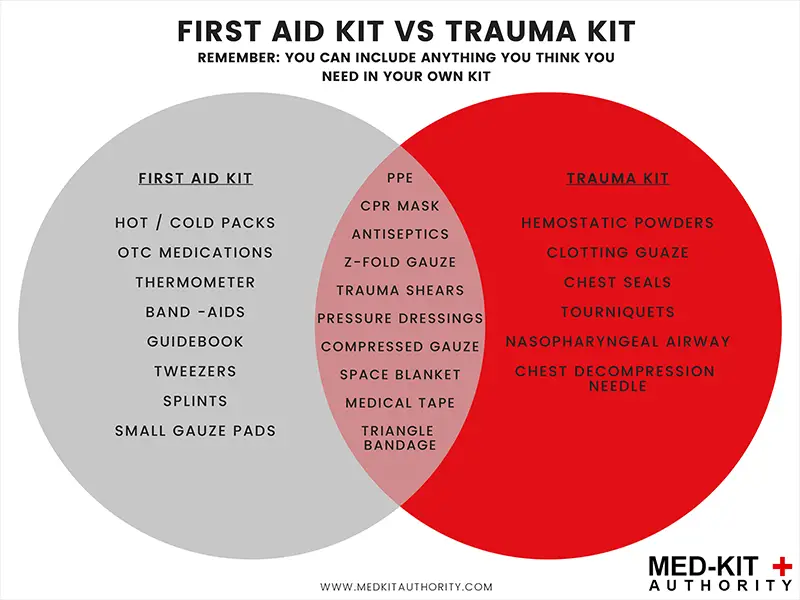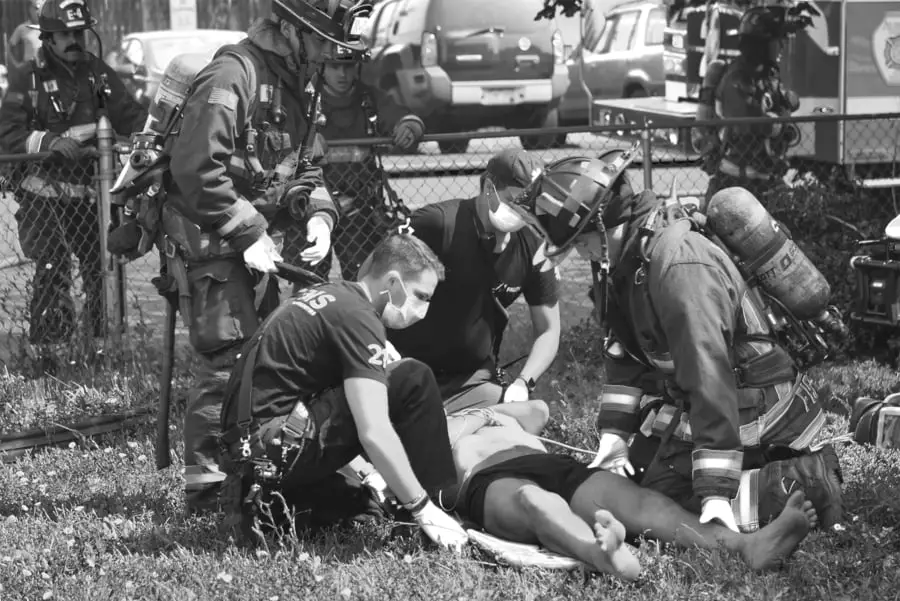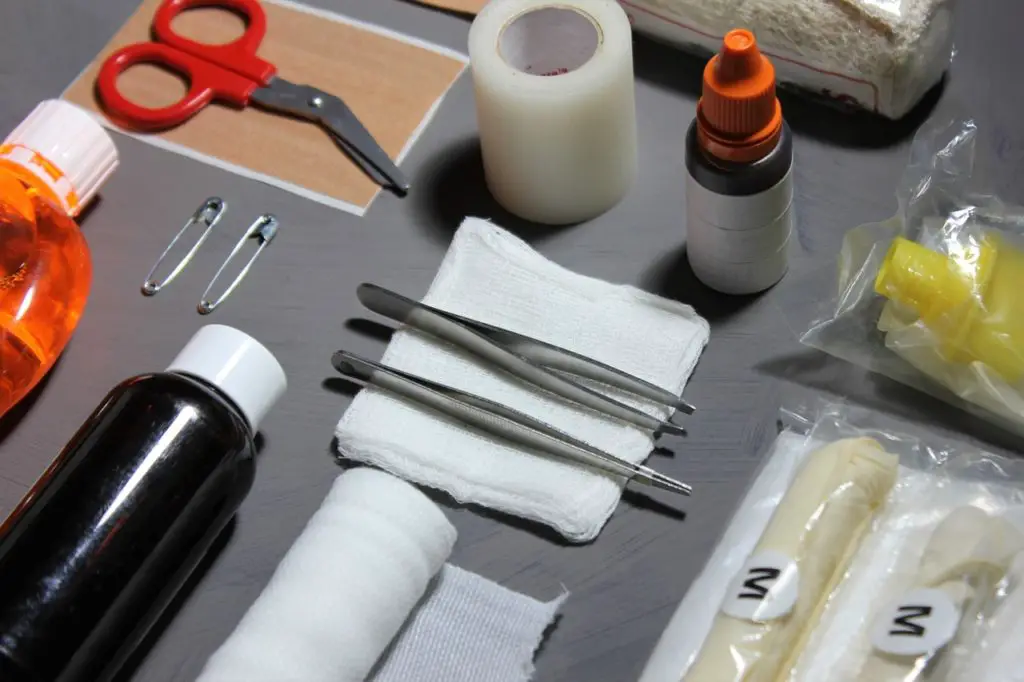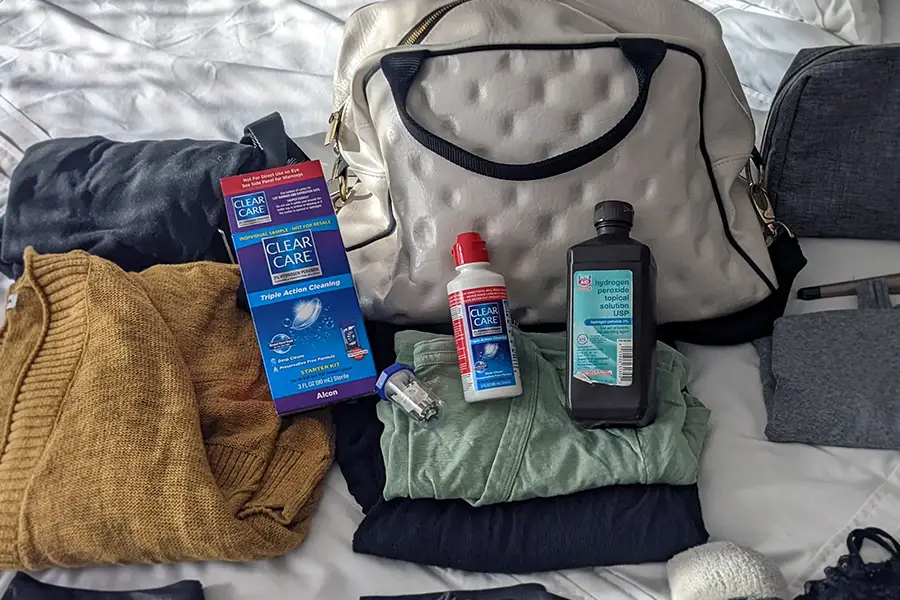As you research your first aid kit needs, I’m sure you’ve come across both of these terms and their associated equipment. First aid kit and trauma kit terminology are sometimes used interchangeably in error. While both are important for responding to injuries, they play distinct and different roles. This article will clear up any misunderstandings of what a first aid kit is, what a trauma kit is, and why you should have both.
Is a trauma kit the same as a first aid kit?
The answer is an easy no, but there are similarities. While both are used to administer first aid, each one addresses different types of injuries. You may choose to carry a first aid kit with or without a trauma kit and conversely, you may choose to carry a trauma kit without a first aid kit. Let’s look at the definitions from Merriam-webster.com:
Traumatic (medical): relating to, being, or caused by a sudden, severe, often life-threatening injury to the body
First aid: emergency care or treatment given to an ill or injured person before regular medical aid can be obtained
The act of first aid may be given to someone with a traumatic injury, but first aid applies to any illness or injury, regardless of severity.
What is the difference between a first aid kit and a trauma first aid kit?
The major difference between a first aid kit and a trauma kit is the type of injury that they address. First aid kits typically are used to administer aid for relatively minor injuries, although many first aid kits contain items that are used to address life-threatening injuries (like a CPR mask, EpiPen, or a pressure bandage). They typically take care of your minor bumps, bruises, and scrapes, or may contain items to help with the immobilization of a broken or sprained limb. They can be very general, like a home or office first aid kit, or purpose-built, for manufacturing facilities or construction sites.
Trauma kits are built with one goal in mind: to keep someone alive after a traumatic injury. They’re built to stop excessive bleeding, help regain or maintain breathing, and/or help to treat shock.
A major difference between the two kits is the skill level involved to use their contents. A first aid kit has most of the items you might find in any household or medicine cabinet; Band-aids, OTC medications, and hydrogen peroxide to name a few. These are items most people have grown up with and know how to use safely and effectively. A trauma kit contains items that require training and some understanding of how the human body functions. The tools included in a trauma kit require knowledge and experience by the first responder to safely and effectively utilized those items.
There is also quite a bit of overlap. Below is a diagram showing the common contents of each kit, and where they may share common tools or supplies.

What is a trauma kit used for?
Trauma first aid kits are meant to address the most life-threatening injuries until help arrives based on your level of experience. The M.A.R.C.H. acronym is the preferred approach to addressing traumatic injuries in order of importance.
M – Massive Hemoraging: This includes taking care of severe bleeding by packing wounds, applying pressure, using hemostatic agents, and/or applying a tourniquet(s). This isn’t the time to address minor bleeding.
A – Airway: Check to see if the injured can breathe and that there are no obstructions in the airway. If they can talk, they can breathe. Nasopharyngeal airways are often contained in a trauma kit. They are a tube that is inserted into the nose and down past the tongue to allow for airflow. Manually checking the mouth and nose, and putting the wounded in the recovery position, are steps that can be taken if an NPA isn’t available.
R – Respirations: This basically relates to the expanding and contracting of the lungs. If there is a puncture to the chest cavity, when you exhale, air will be drawn in through that hole which will limit the amount of air that can be inhaled in the lungs during the next breath. This is what is called a sucking chest wound. When there is a puncture in the lung, air will escape into the chest cavity, which also limits the ability of the lungs to expand fully when breathing. Chest seals and chest decompression needles are used for addressing these issues. A vented chest seal is preferred because it can help address both conditions.
C – Circulation: This is the time to check for signs of shock, re-evaluate any massive hemorrhaging, check for a pulse below tourniquets, and/or when trained responders would use intravenous medications. This would also be the time to apply CPR if the person is not breathing and there is no pulse.
H – Hypothermia/Head Injury: These are the dangers that can’t be seen. Hypothermia is a serious killer, so keeping the wounded person warm is critical. You would also want to look for signs of a concussion.
Several of these techniques are advanced and not expected to be performed by untrained individuals. You can, however, apply the aid you do know until help arrives. Also, learning the signs and symptoms of shock, hypothermia, and tension pneumothorax can be more beneficial than having a kit with items that you don’t know how or when to use.
Sources:
EMS trauma care: ABCs vs. MARCH
Tactical Combat Casualty Care Handbook
What does a trauma kit consist of?
There are many types of trauma kits, but most often contain the following:
General items: Nitrile gloves, trauma shears, pocket guide, and sharpie
Massive Hemorrhaging: Packing gauze, hemostatic gauze, pressure dressing (like an Israeli bandage), and a tourniquet(s)
Airway: Nasopharyngeal airway*
Respirations: Vented chest seals, chest decompression needle*
Circulation: CPR protective mask*
Hypothermia/Head Injury: Mylar blanket
*These items require training and should only be used by qualified individuals.
Is there a tourniquet in a trauma kit?
Most trauma kits do contain at least one tourniquet. Recent findings during the wars in Iraq and Afghanistan have shown tourniquets to be critical in stopping life-threatening injuries. It has also been found that a tourniquet, especially purpose-built ones, does not cause the need to amputate limbs as was previously thought.
What’s the difference between an IFAK and a Trauma kit?
An IFAK and a trauma kit are essentially the same things. IFAK stands for Individual First Aid Kit. This name was created by the US military as a designation for the kit that each service member carries while in combat. It’s deceiving because although called a first aid kit, it has been designed to address traumatic injuries common in combat situations. The term has been adopted by civilians for kits that address similar injuries, although the items they contain may vary from the original military version. In fact, the contents vary by service branch as well.
A trauma kit might consist of the exact same items that an IFAK contains, but can also be scaled up for multiple casualties, or for active shooter situations, where a full backpack or duffle bag style case is needed.
Related: A Full Breakdown of Tactical First Aid Kits
Why do you need both a first aid kit and a trauma kit?
First aid kits are an obviously smart move to take care of all the minor issues that don’t require a trip to the hospital. They also contain over-the-counter drugs to keep us feeling healthy. These contents are meant to be used often and will need to be monitored to ensure the proper quantity of contents is maintained.
Including a trauma kit as part of your first aid kit is a good idea. Whether it’s a deep cut at home or a shooting in a public space, a serious injury can occur at any time. Being prepared for a traumatic injury may save a life. It’s best to keep the trauma kit contained separately from your first aid items to ensure that the contents aren’t used for minor injuries and so that the kit can be grabbed quickly. Make sure it’s labeled in a way that everyone will know exactly what it’s used for.
Have you needed to provide first aid for a traumatic injury? Share your experience in the comments below.




